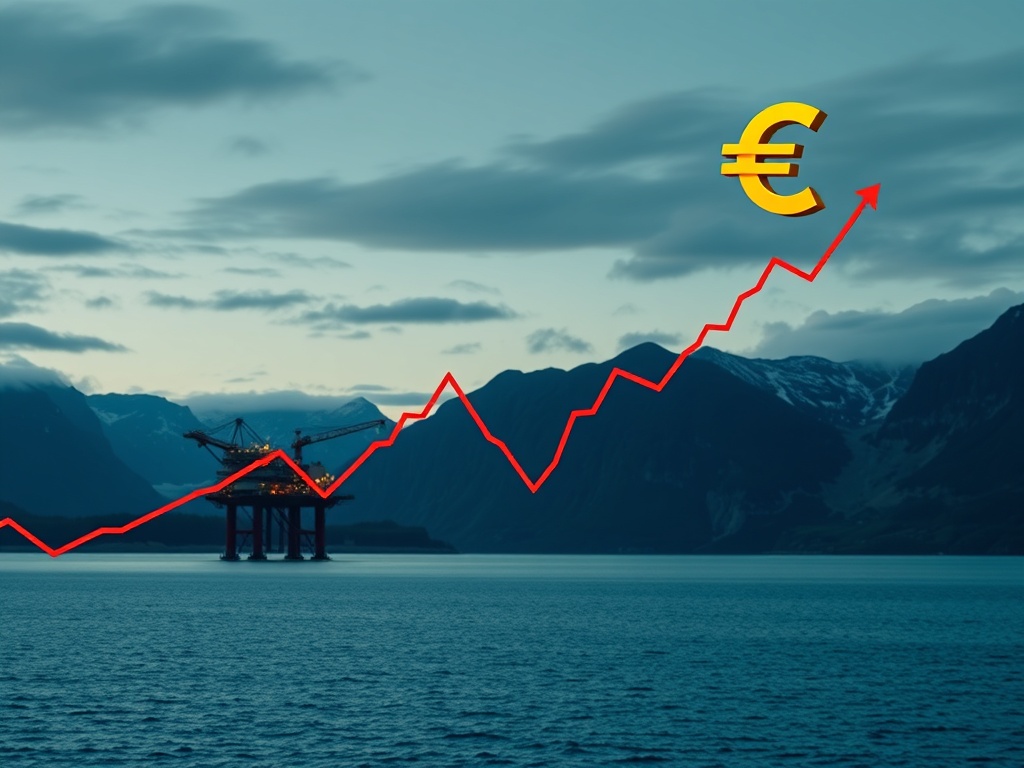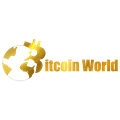EUR/NOK Downtrend: Why Norway’s Economic Strength is a Game Changer
0
0

BitcoinWorld

EUR/NOK Downtrend: Why Norway’s Economic Strength is a Game Changer
In the intricate world of global finance, currency pairs often tell a compelling story about the underlying economic health of nations. For investors and traders, understanding these narratives is paramount, especially when macro trends ripple across all asset classes, from traditional stocks to the volatile cryptocurrency market. Today, our focus turns to a significant shift in the Forex market: the anticipated resumption of a downtrend for the EUR/NOK currency pair. This movement is not just a technical fluctuation; it reflects a deeper narrative of economic divergence, with Norway’s economy showcasing remarkable resilience and outperformance compared to its European counterparts. What does this mean for the future of the Norwegian Krone and the broader market landscape?
Understanding the EUR/NOK Downtrend: What’s Driving the Shift?
The EUR/NOK currency pair, representing the exchange rate between the Euro and the Norwegian Krone, has been a focal point for many traders. Recently, a consensus has emerged among analysts: the pair is expected to resume its downtrend. This implies that the Norwegian Krone is likely to strengthen against the Euro. But what are the fundamental forces at play behind this anticipated movement?
- Economic Divergence: A primary driver is the growing disparity in economic performance between the Eurozone and Norway. While the Eurozone grapples with persistent inflation, sluggish growth, and the lingering effects of geopolitical tensions, Norway’s economy has demonstrated surprising robustness.
- Commodity Prices: Norway is a significant oil and gas exporter. Elevated global energy prices directly bolster Norway’s trade surplus and government revenues, providing a strong tailwind for the Krone.
- Interest Rate Differentials: Central bank policies, particularly interest rate decisions, play a crucial role. Differences in interest rates can make one currency more attractive to hold than another, influencing capital flows.
- Risk Sentiment: Global risk appetite can also impact currency pairs. In times of uncertainty, investors often seek safety, but the Krone’s commodity-linked nature can make it sensitive to shifts in commodity markets.
The combination of these factors creates a compelling case for the EUR/NOK to continue its downward trajectory, signaling a period of sustained Norwegian Krone strength.
Norway Economy: A Beacon of Resilience?
Norway’s economic narrative is one of remarkable resilience, particularly when viewed against the backdrop of global economic headwinds. Despite its relatively small population, Norway commands significant economic clout, largely due to its vast natural resources and prudent fiscal management. Here’s a closer look at what makes the Norway economy stand out:
Key Pillars of Norway’s Economic Strength:
- Oil and Gas Wealth: Norway is one of the world’s largest net exporters of oil and natural gas. This provides substantial revenue, which is largely managed through the Government Pension Fund Global (GPFG), one of the world’s largest sovereign wealth funds. This fund acts as a buffer, insulating the economy from short-term fluctuations and ensuring long-term stability.
- Prudent Fiscal Policy: The Norwegian government adheres to strict fiscal rules, primarily spending only a portion of the GPFG’s real return. This disciplined approach prevents overheating the economy and maintains long-term financial health.
- Strong Labor Market: Norway typically boasts low unemployment rates and high labor participation, supported by a robust welfare state and strong social safety nets. This contributes to stable domestic demand.
- Competitive Export Sectors: Beyond energy, Norway has developed competitive sectors in seafood, maritime technology, and renewable energy, diversifying its economic base.
This structural strength provides a solid foundation for the Norwegian Krone, making it less susceptible to the immediate shocks that might impact other economies. The country’s ability to navigate global challenges, often leveraging its sovereign wealth, underscores its unique position in the global economic landscape.
The Role of Norges Bank Policy in Strengthening the Krone
Central banks are pivotal in shaping currency valuations, and Norges Bank policy is no exception. Norway’s central bank has adopted a relatively hawkish stance, which has been instrumental in supporting the Norwegian Krone. Let’s explore the key aspects of their strategy:
Norges Bank’s Approach:
- Proactive Interest Rate Hikes: Norges Bank has been among the more aggressive central banks in hiking interest rates to combat inflation. Higher interest rates make a currency more attractive to foreign investors seeking better returns, thereby increasing demand for the Krone.
- Inflation Targeting: The central bank has a clear mandate to maintain price stability, targeting an inflation rate of around 2 percent. Their commitment to this target has instilled confidence in the market regarding their resolve to tighten monetary policy as needed.
- Communication and Transparency: Norges Bank is known for its clear and transparent communication regarding its monetary policy outlook. This helps market participants anticipate future moves, reducing uncertainty and allowing for more stable market reactions.
- Impact of Oil Prices: While not directly setting policy based on oil prices, Norges Bank acknowledges the significant impact of commodity revenues on the economy. Higher oil prices can lead to increased government spending capacity (from the GPFG), which the central bank must consider when assessing inflationary pressures and economic growth.
The divergence in monetary policy between Norges Bank and the European Central Bank (ECB) is a critical factor driving the EUR/NOK forecast. As Norges Bank continues its tightening cycle or maintains higher rates for longer, the interest rate differential in favor of the Krone is likely to widen, further fueling its appreciation against the Euro.
Forex Market Outlook: Navigating the Shifting Tides
For traders and investors, understanding the broader Forex market outlook is crucial for making informed decisions. The anticipated EUR/NOK downtrend is a significant development, but it exists within a complex web of global economic forces. What does this mean for the currency pair and other related assets?
Key Considerations for the Forex Market:
| Factor | Impact on EUR/NOK | Broader Implications |
|---|---|---|
| Interest Rate Differentials | Wider differential favors NOK, pushing EUR/NOK down. | Influences capital flows globally, impacts bond yields. |
| Commodity Prices (Oil) | Higher oil prices strengthen NOK. | Affects inflation, energy costs, and trade balances for many nations. |
| Eurozone Economic Health | Weak Eurozone data weakens EUR against NOK. | Impacts global growth sentiment, risk appetite. |
| Global Risk Sentiment | Increased risk aversion can sometimes support safe-haven currencies, but NOK’s commodity link can also make it sensitive. | Affects equity markets, bond markets, and other asset classes like cryptocurrencies. |
| Central Bank Forward Guidance | Future signals from Norges Bank vs. ECB will dictate long-term trends. | Provides clarity for long-term investment strategies. |
The sustained strength of the Norwegian Krone, driven by the robust Norway economy and proactive Norges Bank policy, paints a clear picture for the EUR/NOK. Traders should prepare for continued pressure on the pair, suggesting that selling into rallies or looking for opportunities to go short on EUR/NOK might be a viable strategy.
Norwegian Krone Strength: Opportunities and Challenges for Traders
The projected Norwegian Krone strength presents both opportunities and challenges for various market participants. For Forex traders, understanding these nuances is key to capitalizing on the prevailing trends. How can you navigate this environment effectively?
Opportunities:
- Short EUR/NOK Positions: The most direct opportunity lies in taking short positions on the EUR/NOK pair, betting on its continued decline. This can be done through spot Forex trading or derivatives.
- Carry Trade Potential: If Norges Bank maintains higher interest rates than the ECB, a positive carry can be generated by holding NOK-denominated assets or shorting EUR/NOK, earning interest on the rate differential.
- Diversification: For portfolios heavily exposed to the Eurozone, adding NOK-denominated assets or currency exposure can offer diversification benefits, hedging against potential Euro weakness.
- Commodity Linkage: For traders with a bullish outlook on global energy prices, the NOK offers a way to express that view through currency markets.
Challenges:
- Volatility in Oil Prices: While a tailwind, a sudden downturn in global oil prices could quickly reverse the Krone’s fortunes, leading to increased volatility.
- Global Economic Slowdown: A severe global recession could dampen demand for Norwegian exports, including oil, regardless of domestic strength.
- Norges Bank Policy Shifts: Any unexpected dovish pivot by Norges Bank, or a surprisingly hawkish shift from the ECB, could alter the interest rate differential and impact the EUR/NOK forecast.
- Liquidity: While a major currency, NOK can be less liquid than major pairs like EUR/USD, potentially leading to wider spreads during volatile periods.
Diligent analysis of economic indicators, central bank communications, and geopolitical developments will be crucial for those looking to leverage the ongoing Norwegian Krone strength.
Actionable Insights for Traders and Investors
Given the strong indicators pointing towards a sustained EUR/NOK downtrend, what specific steps can traders and investors consider?
- Monitor Key Economic Data: Keep a close eye on Norwegian inflation, GDP growth, and unemployment figures. Similarly, track Eurozone equivalents to gauge the divergence. Pay particular attention to oil price movements, as they are a significant determinant for the Norway economy.
- Follow Central Bank Commentary: Scrutinize statements and minutes from both Norges Bank and the ECB. Any subtle shifts in language can signal future policy changes that will impact the Forex market outlook.
- Technical Analysis: Complement fundamental analysis with technical indicators. Look for clear downtrend confirmations, support and resistance levels, and potential entry/exit points on the EUR/NOK chart. Breakouts below key support levels could confirm the resumption of the downtrend.
- Risk Management: As with any Forex trade, robust risk management is paramount. Utilize stop-loss orders to limit potential losses and define your risk-to-reward ratio before entering a trade. The currency market can be unpredictable, and even strong trends can experience temporary reversals.
- Consider Diversification: For those with a long-term view, exploring Norwegian equity markets or NOK-denominated bonds could offer a way to benefit from the underlying economic strength, albeit with different risk profiles.
Conclusion: Riding the Wave of Norwegian Outperformance
The anticipated resumption of the EUR/NOK downtrend is a compelling narrative of economic strength versus lingering challenges. Norway’s robust economy, underpinned by its vast energy wealth and disciplined fiscal policy, coupled with the proactive stance of Norges Bank, creates a powerful tailwind for the Norwegian Krone. While the Eurozone continues to navigate its own set of hurdles, the divergence in economic performance and monetary policy is likely to keep the pressure on the EUR/NOK pair. For those in the Forex market, this presents clear opportunities, but also necessitates careful monitoring and strategic planning. By understanding the intricate interplay of economic fundamentals, central bank actions, and global market dynamics, traders can position themselves to potentially benefit from the unfolding story of Norwegian Krone strength.
To learn more about the latest Forex market trends, explore our article on key developments shaping currency valuations and global macro trends.
This post EUR/NOK Downtrend: Why Norway’s Economic Strength is a Game Changer first appeared on BitcoinWorld and is written by Editorial Team
0
0
 Manage all your crypto, NFT and DeFi from one place
Manage all your crypto, NFT and DeFi from one placeSecurely connect the portfolio you’re using to start.






